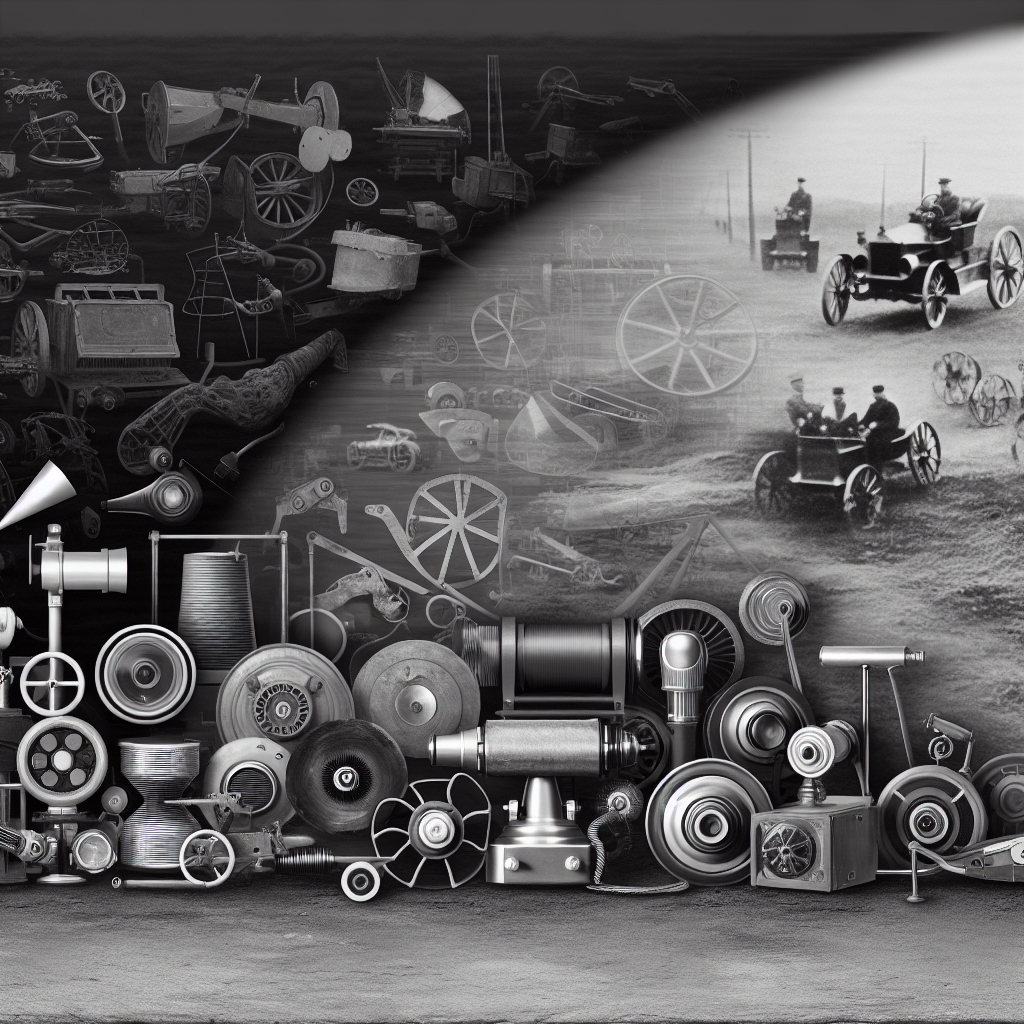Table of Contents: Your Strategic Guide to Unlocking Innovation
The Non-Negotiable Truth: Why Failure Fuels Breakthroughs
Most people romanticize success. They see the gleaming product, the IPO, the headlines. But the brutal truth? Every major innovation, every tech empire, is built on a graveyard of failures. This isn’t about simply “bouncing back;” it’s about strategically extracting vital lessons from the inevitable missteps. If you’re building, creating, or leading in tech, understanding this dynamic isn’t optional—it’s your absolute competitive edge. Period.
Early tech failures aren’t roadblocks; they serve as invaluable, high-stakes market research. They expose fatal flaws in strategy, product, and timing that no whiteboard session ever could. Forget the linear path to progress. Innovation is a messy, iterative process fueled by relentless trial, error, and an unwavering commitment to learn. We’re dissecting these historical blunders not to shame, but to equip you with the knowledge to avoid repeating them, and instead, propel your next breakthrough. This is how you truly lead. This is how you master the game.
Unpacking Catastrophe: Direct Lessons from Tech’s Biggest Flops
Let’s get direct. These aren’t just stories; they’re blueprints for what not to do, and paradoxically, precisely how to win. Pay attention. Your future depends on it.
The Osborne 1: A Masterclass in Market Misjudgment
In 1981, the Osborne 1 hit the market, touted as a “portable computer”—revolutionary for its time. Initial sales soared. Yet, just a year later, the company imploded. Why? Because they violated fundamental principles of market strategy. This is mandatory learning.
- The Pre-Announcement Disaster: They announced future, superior models before the current one even shipped in volume. This immediately killed demand for the existing product. This is a classic “Osborne Effect”—a strategic blunder still taught in every serious business school. Never kill your own demand.
- Design Flaws vs. Market Need: “Portable” was a stretch. At 24 pounds, it was a heavy lug, not a true mobile solution. Your product must genuinely solve the problem it claims to address, without compromise. If it doesn’t, it’s dead on arrival.
- Ignoring the Competition: Rapid advancements from rivals offering better features at lower prices were ignored. In tech, you’re always in a race. Complacency is lethal. You’re either gaining ground or losing it.
The actionable takeaway? Master your marketing timing. Design with relentless focus on the user’s actual needs, not just what’s technically possible. And always, always have an agile competitive strategy. These aren’t suggestions; they’re mandates for survival and growth.
Netscape Navigator: The Empire That Crumbled Strategically
Netscape Navigator, launched in 1994, defined the early internet. It was dominant. However, the “browser wars” with Microsoft Internet Explorer proved disastrous for Netscape. This wasn’t about a bad product; it was about a critical failure in strategic adaptability. This is a lesson in power dynamics.
- Underestimating the Giant: Microsoft aggressively bundled Internet Explorer with Windows. Netscape failed to grasp the magnitude of this distribution advantage. Never underestimate your competition, especially when they control the platform. Never fight a land war in Asia, and never take on a platform owner on their own turf without a superior strategy.
- The Closed-Source Trap: While Microsoft opened IE’s code, Netscape remained closed. This stifled community development and limited its ability to rapidly iterate and integrate. Today, open standards and collaboration are cornerstones of web development. Adapt or die.
- No Sustainable Revenue Model: Beyond initial success, they lacked a forward-thinking business model. You can’t just build; you must build a sustainable enterprise. Revenue isn’t a byproduct; it’s the lifeblood.
Netscape’s downfall screams one message: Agility and a clear, evolving business model are non-negotiable. Don’t get comfortable; get strategic. Your comfort is your enemy.
Beyond the Battlefield: Core Principles from Consumer Tech’s Early Days
It’s not just about software. Hardware and consumer electronics—they all echo the same, brutal lesson: market intelligence beats technical arrogance. Every single time.
Betamax vs. VHS: Why Superior Tech Doesn’t Guarantee Victory
Sony’s Betamax arrived first in the mid-70s, boasting superior picture quality, yet it lost the format war to JVC’s VHS. This illustrates a crucial lesson in consumer preference over technical purity. This is about real-world value, not specs.
- The User Experience Win: VHS offered longer recording times. Consumers wanted to record a whole movie, not just half. The market dictates utility, not engineers. Stop building for yourself; build for your customer’s actual problem.
- Strategic Licensing: JVC licensed VHS widely, while Sony kept Betamax proprietary. This led to broader adoption and a more robust ecosystem for VHS. Collaboration, not isolation, often builds market share. Your walled garden might just be a coffin.
- Marketing & Distribution: VHS out-marketed and out-distributed Betamax. You can have the best product, but if no one knows about it or can access it, you lose. Plain and simple.
This is your painful reminder: technical superiority alone is irrelevant without overwhelming market appeal and a robust strategic ecosystem. The customer’s reality trumps your engineering pride. Period. End of discussion.
The Apple Newton: Flawed Execution, Future Foundational Ideas
The Apple Newton (1993) was a pioneer in personal digital assistants (PDAs) with groundbreaking handwriting recognition. Despite its innovation, it struggled commercially. This is a lesson in timing and practical design.
- Exorbitant Price: High cost locked out most consumers. Value must align with perceived benefit. If your price doesn’t justify the pain it solves, you’re dead.
- Bulky & Battery Issues: The device was cumbersome and had poor battery life. Design must prioritize usability in the real world. Nobody cares how smart your tech is if it’s a pain to use.
- Handwriting Recognition: While groundbreaking, it was often imperfect, leading to user frustration. A feature, no matter how innovative, can become a liability if it fails on core functionality. Innovation without reliability is just a party trick.
Though a commercial flop, the Newton’s idea laid the groundwork for the iPhone and iPad. This isn’t a story of outright failure, but of premature execution. Sometimes your idea is right, but the market, tech, or your execution isn’t ready. The lesson? Learn, iterate, and when the time is right, strike again. This iterative approach is crucial for long-term technological innovation. Don’t waste your good ideas; hold them until the world catches up.
Identifying the Deep Flaws: Why Brilliant Ideas Still Crash
It’s not always individual products that fail. Often, systemic misjudgments sink entire initiatives. These deep lessons are crucial to grasp if you want to play at the highest level.
The Market Isn’t Ready: Misreading Demand
A fatal flaw: launching a product that’s “ahead of its time.” You might have genius tech, but if consumers aren’t ready, it’s a non-starter. Think early 3D TVs or Google Glass—technically impressive, but commercially disastrous. Why?
- Cost vs. Perceived Value: The benefit didn’t justify the price for most. You’re solving a problem nobody feels.
- Usability Hurdles: Too complex or simply awkward for everyday use. Friction kills adoption.
- Social Acceptance: Sometimes, the world isn’t ready for your vision. Period.
Your job isn’t just to innovate; it’s to understand the psychological, social, and economic landscape of your target market. You need to identify if a market exists, not just if a product can be built. You’re a strategist, not just a builder.
Timing & Execution: The Brutal Reality of Launch
Good timing is crucial. Launch too early, you burn resources and market interest. Launch too late, and the window closes. The Concorde supersonic jet remains a stark example. Although a marvel of engineering, it was economically unsustainable due to high costs and insufficient consumer demand. It wasn’t just what they built, but how and when they brought it to market that sealed its fate. This is the difference between a project and a profitable enterprise.
Execution covers everything—design, manufacturing, marketing, distribution, customer support. A breakdown in any area can torpedo a promising venture. This is where most dreams die. Don’t just plan; execute with precision and ruthless adaptability. Flawless execution is your shield and your sword.
Your Blueprint for Domination: Embracing Failure, Building What’s Next
The masters don’t avoid failure; they leverage it. This is the mindset shift you need to make. Right now.
The Silicon Valley Imperative: Fail Fast, Learn Faster
The “failing fast” mantra isn’t about being sloppy or careless. It’s about rapid iteration, testing assumptions relentlessly, and extracting maximum, actionable feedback from every misstep. It’s about transforming perceived losses into invaluable data that informs your next, better move. Companies like Tesla and SpaceX openly share their early struggles—explosions, delays, massive challenges. Why? Because they understand it’s part of the process. This resilience is the bedrock of innovation; it transforms failure from a stigma into a necessary learning process. Embrace this, and you embrace unlimited growth. Refuse it, and you’re already behind.
Standing on Giants: Leveraging History for Future Wins
No innovation exists in a vacuum. Every breakthrough builds on what came before—and yes, that absolutely includes the glorious failures. The graphical user interface (GUI), now ubiquitous, was popularized by Apple, but its origins are rooted in pioneering yet commercially unsuccessful work at Xerox PARC. Apple learned from Xerox’s missteps, refined the concept, and achieved mass adoption. You don’t have to repeat the same mistakes. By understanding tech history—the successes and the spectacular collapses—you gain an unparalleled strategic advantage. This is your cheat sheet to effective innovation. Use it to your advantage.
The Unbeatable Edge: Why Tech History Is Your Strategic Weapon
For entrepreneurs, engineers, and anyone navigating the chaotic world of technology, understanding these historical failures offers an invaluable compass. It provides:
- Risk Awareness: Anticipate challenges and pitfalls before they derail you. See the landmines before you step on them.
- Strategic Foresight: Better predict market needs and technological hurdles. Build for tomorrow, not just today.
- Inspiration & Resilience: Draw strength from pioneers who faced immense setbacks yet pushed humanity forward. Their grit is your blueprint.
The stories of early tech failures are not tales of defeat. They are foundational narratives of reinvention, trial, error, and ultimate triumph. Every major technological leap you enjoy today—from the smartphone in your pocket to the cloud infrastructure powering your business—stands on this legacy of relentless experimentation. It demands patience, humility, and a non-negotiable willingness to learn from every single misstep.
This isn’t about dwelling on the past. It’s about extracting brutal, actionable wisdom to shape your future because in the fast-evolving tech landscape, persistence and adaptability aren’t just traits; they are the absolute keys to unlocking your next breakthrough. They are the keys to your success.
Need to refine your tech strategy or avoid common pitfalls in your next project? This is where strategic guidance becomes non-negotiable. Let’s connect and build a blueprint for your success. Reach out here.
Embrace the lessons of the past. Forge the innovations of tomorrow. That’s how you win. That’s how you dominate.



